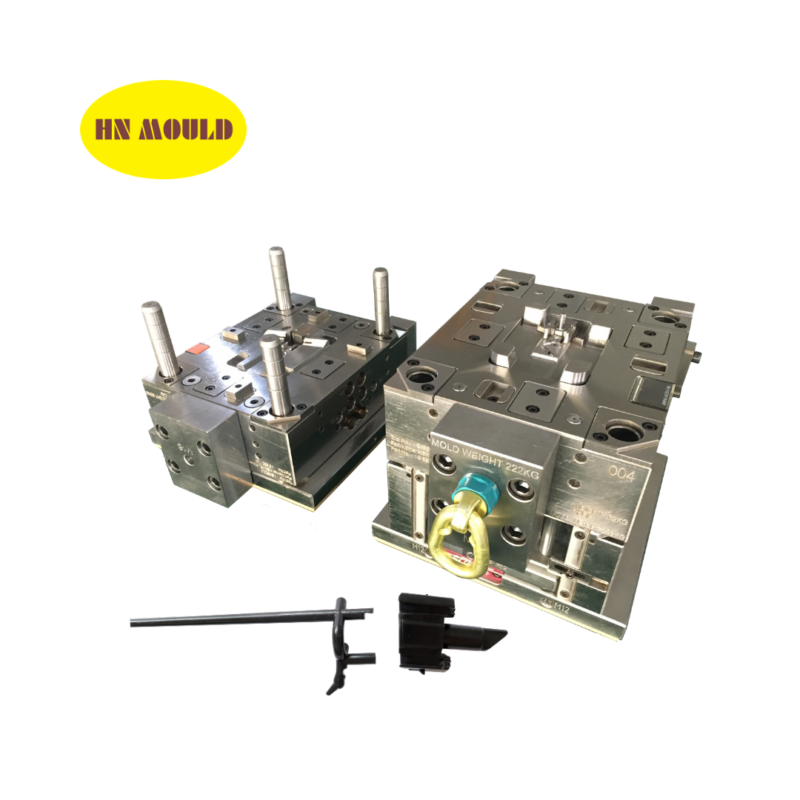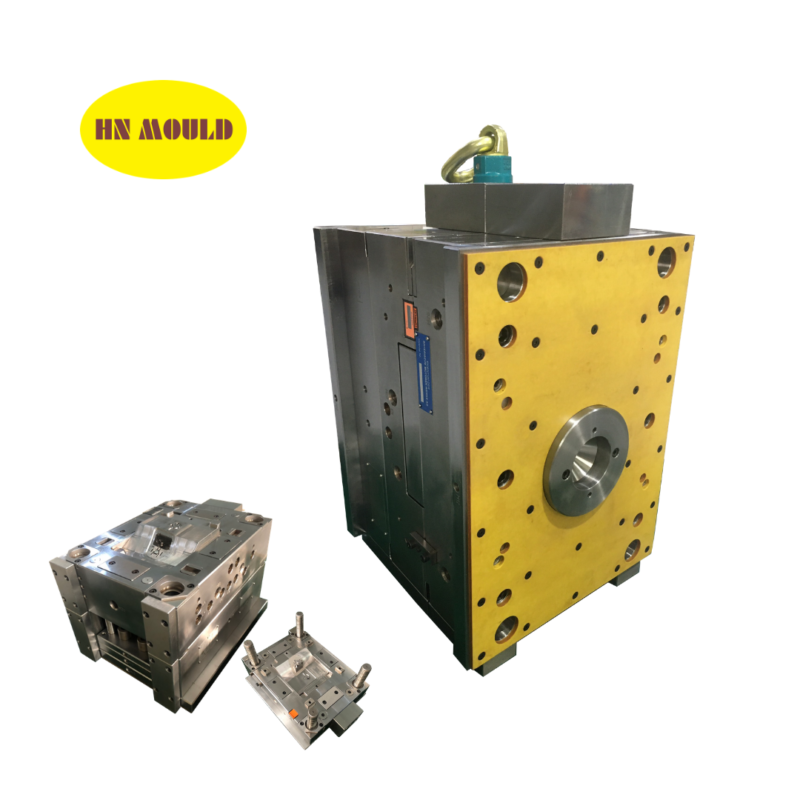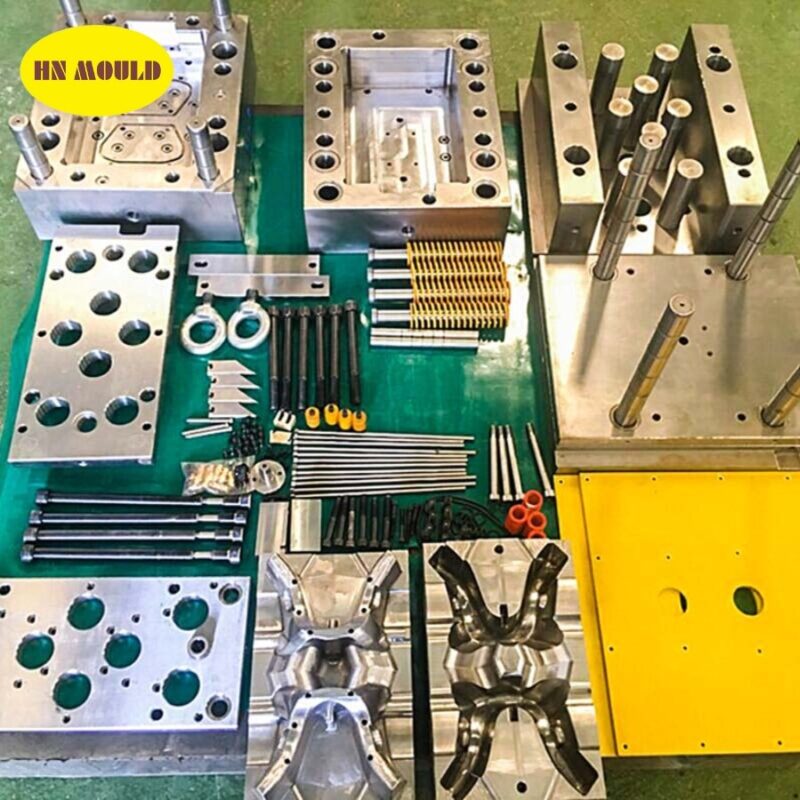Contents
TPE (Thermoplastic Elastomer) is becoming increasingly popular in the plastics industry due to its superior properties. In this article, we will explore TPE injection molding in detail, from its definition and production process to practical applications.
The search for flexible, durable, and environmentally friendly materials is crucial in the modern industrial world. TPE meets all these requirements, making it an ideal choice for various applications. This article will provide an overview of TPE, the injection molding process, and its practical applications.

If you are interested in injection molds and need to produce plastic products in bulk, please contact Hanoi Mould or call our hotline at 0912 308 979 for consultation!
1. What is TPE?
TPE is a type of thermoplastic elastomer that combines the properties of rubber and plastic. This makes TPE an ideal choice for applications that require flexibility while still needing high durability. TPE can be recycled and easily processed, helping to minimize environmental impact.
1.1. Characteristics and properties of TPE
- Flexibility: TPE has excellent elasticity, allowing products to bend easily without breaking. This flexibility is crucial in applications such as children’s toys, where safety and flexibility are top priorities.
- Chemical resistance: TPE is resistant to many types of chemicals, including oils and solvents, protecting products in various environments. This makes TPE an ideal choice in the food and chemical industries.
- Good heat resistance: TPE can withstand temperatures up to about 120°C, making it suitable for many applications in hot environments. This allows TPE to be used in products like handle grips and automotive components.
- Environmentally friendly: TPE can be recycled and is often made from bio-based materials, reducing environmental impact. This addresses the growing demand for sustainable and eco-friendly products.
1.2. Types of thermoplastic elastomers (TPE)
TPE is a very diverse group of materials, classified into various types based on their chemical composition and structure. Each type of TPE has its unique properties, suitable for different industries. Classifying TPE based on its chemical composition and structure helps manufacturers choose the most suitable material for specific applications:
a. TPE-S (styrene block copolymers)
TPE-S is the most common type of TPE, produced from styrene copolymers. It has rubber-like properties but can be easily processed like plastic.
- Characteristics:
- Good flexibility and elasticity.
- High impact resistance.
- Easily colored and recyclable.
- Applications: Used in toys, electronic components, and consumer products.
b. TPE-O (olefinic thermoplastic elastomers)
TPE-O is produced from polyolefin, providing durability and excellent chemical resistance.
- Characteristics:
- Good heat and chemical resistance.
- Soft and rubber-like feel.
- Applications: Commonly used in the automotive industry, sports products, and outdoor applications.
c. TPE-U (thermoplastic polyurethane elastomers)
TPE-U is a type of TPE made from polyurethane, known for its durability and flexibility.
- Characteristics:
- High abrasion and impact resistance.
- Good elasticity and heat resistance.
- Applications: Used in medical products, automotive components, and industrial applications.
d. TPE-E (thermoplastic polyester elastomers)
TPE-E is produced from polyester, providing high durability and heat resistance.
- Characteristics:
- Good heat resistance and chemical resistance.
- Soft feel and high flexibility.
- Applications: Commonly used in electronic products, medical devices, and toys.
e. TPE-A (thermoplastic polyamide elastomers)
TPE-A is a type of TPE made from polyamide, featuring excellent mechanical properties.
- Characteristics:
- High tensile strength and excellent chemical resistance.
- Good elasticity.
- Applications: Used in mechanical components, cables, and industrial applications.
2. What is TPE injection molding?
TPE injection molding is a manufacturing process that uses heat and pressure to shape products from TPE. This process allows for the mass production of products with diverse shapes and sizes, meeting market demands. TPE injection molding can produce highly accurate products with good surface finishes.
3. Advantages of TPE injection molding

- Flexibility: The injection molding process allows for the creation of complex products with high precision. This is essential in industries requiring products with specific shapes, such as electronics and healthcare.
- Cost savings: Mass production helps reduce manufacturing costs and conserve materials. This makes TPE an economical choice for many businesses.
- Fast production time: The TPE injection molding process can be completed quickly, boosting production efficiency and reducing wait times. This is a significant advantage in today’s competitive environment.
- High-Quality Products: Products are produced uniformly and accurately, ensuring they meet quality standards. This helps minimize product defect rates and enhances brand reliability.
4. The process of injection molding TPE
The process of injection molding TPE includes the following main steps:
a. Material preparation
TPE plastic is ground into small pieces and fed into the injection molding machine. The materials must ensure high quality to avoid affecting the final product. Choosing a reputable supplier will ensure the quality of TPE.
b. Melting
The plastic is heated in the machine until it becomes liquid (approximately 200-230°C), ensuring uniformity of the material. The temperature and melting time need to be closely controlled to ensure the properties of the plastic are not altered.
c. Injection into the mold
The liquid plastic is injected into the mold to shape it. The injection pressure is usually very high to ensure that the plastic fills the entire mold. This process must be carried out quickly to prevent the plastic from solidifying before the mold is filled.
d. Cooling
After the plastic solidifies, the mold is opened, and the product is removed. The cooling process must be performed evenly to avoid deformation of the product. The cooling time also needs to be optimized to increase production efficiency.
e. Quality inspection
The final product is inspected to ensure there are no defects and that it meets quality standards. Quality control must be conducted according to strict procedures, including checking dimensions, durability, and surface finish.

Learn more about Hanoi Mold Company’s plastic mold manufacturing process here: https://hanoimould.com/plastic-mold-production-process-hanoi-mould-company/
5. Considerations during the TPE injection molding process
- Choose quality materials: Ensure the use of high-quality TPE from reputable suppliers. Poor-quality materials can lead to substandard final products.
- Accurate mold design: Invest in precise mold design to optimize the production process and minimize waste. The mold must be designed for easy filling and removal.
- Regular inspections: Conduct regular quality inspections to ensure products meet standards and detect any emerging issues promptly. This helps maintain consistent product quality.
6. Applications of TPE injection molding
TPE is widely used in various fields, including:
- Household items: Production of products such as toys, floor mats, and kitchen utensils due to its durability and safety. TPE is commonly used in products that come into direct contact with children.
- Medical industry: TPE is used to manufacture medical devices, syringes, and other healthcare products due to its safety and antibacterial properties. TPE is ideal for products that require high cleanliness and safety.
- Automotive industry: Production of components such as door handles, rubber seals, and other parts due to their elasticity and excellent heat resistance. TPE enhances the durability of these products in harsh conditions.
- Electronics and information technology: TPE is used for products such as cables and electronic device casings. The flexibility and waterproofing ability of TPE help protect internal components.
Conclusion
Injection molding TPE is an efficient production process with many outstanding advantages. Understanding the characteristics, processes, and applications of TPE will help businesses optimize production and achieve sustainable development in the future. With its recyclability, versatility, and diverse applications, TPE is truly one of the top choices for many industries. Please contact Hanoi Mould to learn more about injection molding services and explore optimal solutions for your needs!
If you are interested in plastic molds and need to produce mass quantities of plastic products, please contact Hanoi Mould or call the hotline: 0912 308 979 for consultation!
 Tiếng Việt
Tiếng Việt English
English 日本語
日本語
